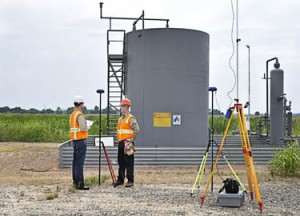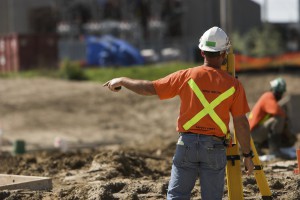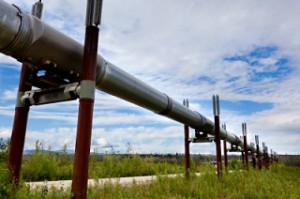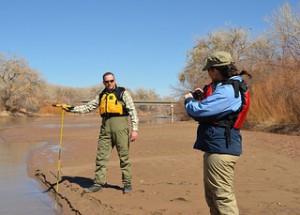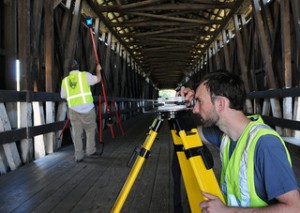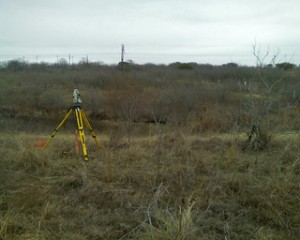5 Challenges Oil and Gas Companies Are Facing in the Eagle Ford Shale
 Domestic shale extraction of oil and natural gas has created a substantial economic boom for the country. Oil and gas companies working the Eagle Ford Shale area of Texas are generating wealth and jobs, but financial, human-resource and technology challenges persist. Nearly 400 drilling rigs operate in West Texas, and Eagle Ford Shale contains 3.351 billion barrels of oil and 20.81 trillion cubic feet of natural gas. The area generates more than one million barrels of oil and nearly 5,000 cubic feet of gas per day. Oil production in 2013 topped 688,429 barrels. Shale extraction at Eagle Ford has generated an unparalleled economic windfall for localities, Texas and the nation. Prospects for continued increases in production are astonishing.But there are still a number of challenges that oil and gas companies are facing in that region. Here is a look at 5 main issues they are facing.
Domestic shale extraction of oil and natural gas has created a substantial economic boom for the country. Oil and gas companies working the Eagle Ford Shale area of Texas are generating wealth and jobs, but financial, human-resource and technology challenges persist. Nearly 400 drilling rigs operate in West Texas, and Eagle Ford Shale contains 3.351 billion barrels of oil and 20.81 trillion cubic feet of natural gas. The area generates more than one million barrels of oil and nearly 5,000 cubic feet of gas per day. Oil production in 2013 topped 688,429 barrels. Shale extraction at Eagle Ford has generated an unparalleled economic windfall for localities, Texas and the nation. Prospects for continued increases in production are astonishing.But there are still a number of challenges that oil and gas companies are facing in that region. Here is a look at 5 main issues they are facing.
Problems that Technology and Regulation Must Solve
Challenge 1—Skilled Labor Shortages
Drillers, truck drivers and skilled workers are increasingly hard to find. Eagle Ford Shale gas and oil companies employed 38,000 workers in 2011, and demand is steadily growing. The 14 surrounding counties have sparse populations, and transient workers create hosts of service problems for localities.
Challenge 2—Failure to Invest in New Technologies
New technologies drive efforts to revisit old fields and extract oil and gas. Failing to invest in technology, pipelines and other energy-delivery systems could cause production companies to miss potential revenue generating operations. Stakeholders in raising funds for research include drillers, landowners, major energy users, utility companies and regulators at all levels of government. Technology challenges include finding better methods of detecting methane leaks, optimizing production, cutting costs and minimizing environmental damage.
Challenge 3—Ensuring Safety and Security
For oil and gas companies, safety and security issues are interrelated to all the other challenges of shale extraction. Drillers, landowners and residents face the following risks:
Proximity to Mexico
Mexican drug cartels smuggle drugs, people and contraband across the border.
Inexperienced Workers
Scarce labor causes companies to hire inexperienced people to work in hazardous environments where mistakes could cause major risks.
Poor Records
Poor record-keeping results in mistakes, inefficient field data collection and faulty security reviews.
Oil and gas companies concerned with security also need to make sure that they partner with contractors who put strong emphasis on safety. If safety isn’t a top priority for everyone involved with a project then it can easily result in a hazardous work environment.
Challenge 4—Protecting the Environment
Water use and conservation are big issues in Texas, and overlapping and contradictory regulatory requirements create challenges at the federal, state and local level. Texas has the unique distinction of supporting environmentalism and big energy. Environmental challenges that oil and gas companies face in Eagle Ford Shale include:
Water Shortages
Texas suffers from ongoing water shortages, and fracking shale requires vast amounts of water.
Air emissions
Perhaps the most well known oil and gas environmental regulation. Dealing with problems of air emissions include those generated by drilling and air emissions by large fleets of tanker trucks. Diesel rigs produce fumes and drilling releases volatile organic compounds, methane and greenhouse gases.
Challenge 5—Transportation
While it’s possible to transport oil and gas by rail or by truck, these methods tend to be costlier. The most efficient and inexpensive method is by pipeline, although this comes with its own set of challenges:
Property Rights and Landowners
As local landowners become more educated about their rights there has been a rise in cases regarding right-of-ways, shut-in-wells, lease terms, and other legal issues. This makes running pipelines through their property more challenging and requires a greater degree of field data collection and planning beforehand in order to ensure that a clear legal picture is made during the initial surveying work.
Line Capacity
In some areas of the Eagle Ford Shale, the current amount of pipelines is at capacity and in some cases wells have been shut in. As a result, there has been a drive to build new lines and expand existing ones in order to increase capacity.
The Bottom Line
Oil and gas companies provide 62 percent of energy consumption in the United States. The energy industry must deal with technology changes as well as environmental and regulatory challenges and conflicting agendas from stakeholders. Advanced field data collection and 3-D modeling has helped to reduce costs as well as keep projects organized and running on time. What are the challenges that concern you the most? What are the best ways of tackling these issues? Please post your thoughts in the comments below.


